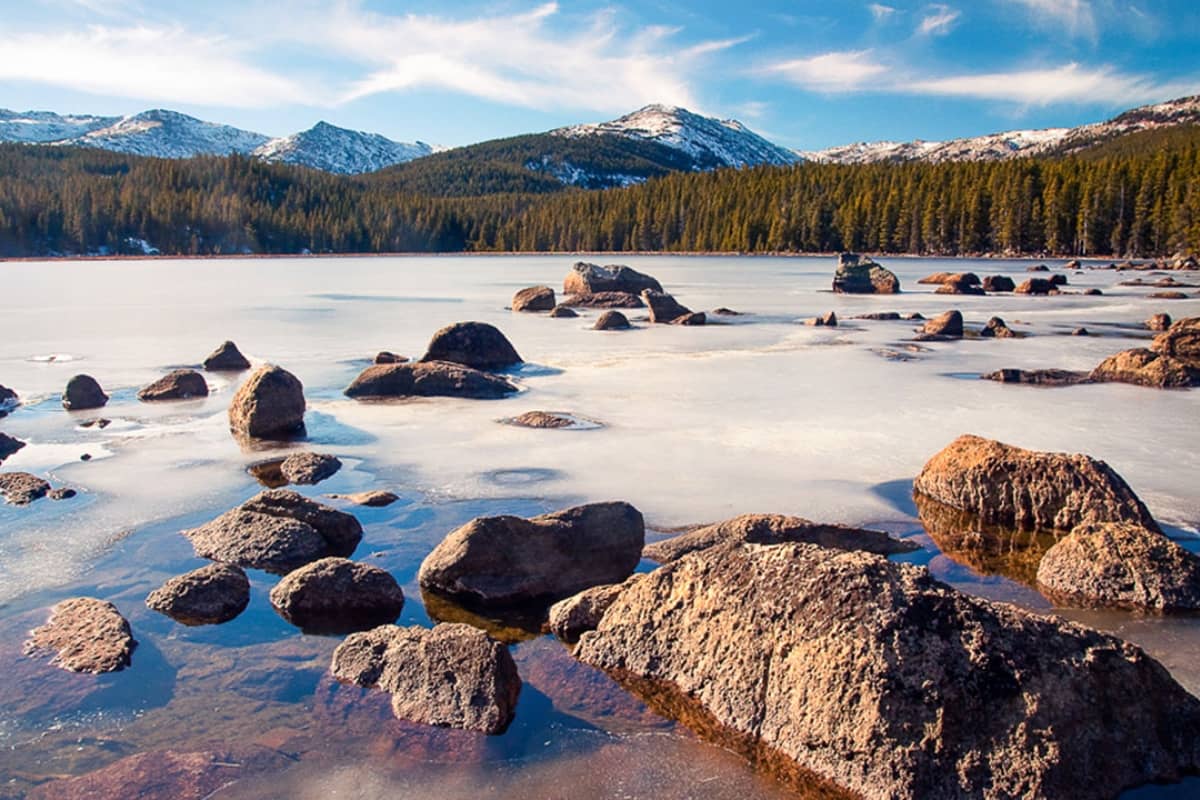The Bighorn Mountains, a pristine range in northern Wyoming, attract nature lovers and adventurers year-round. Yet, first-time visitors often make critical errors that could turn their trip from a dream into a nightmare. From underestimating the rugged terrain to ignoring wildlife safety protocols, there are several crucial mistakes to avoid. Here’s an in-depth look at the nine deadliest mistakes that newcomers should steer clear of when exploring the Bighorns.
1. Underestimating Weather Extremes
One of the most dangerous mistakes visitors make is assuming that summer weather in the Bighorns will remain mild and predictable. Even on seemingly clear days, conditions can shift abruptly. Afternoon thunderstorms are common, and in some cases, early snowfall occurs even in late summer or early fall. Travelers should pack for all weather conditions, including waterproof gear and layers, even during the warmer months. It’s also vital to monitor weather forecasts closely, especially if planning to summit Cloud Peak or explore higher altitudes, where weather conditions are more volatile.
2. Neglecting Proper Altitude Acclimation
The Bighorn Mountains reach heights of over 13,000 feet, with Cloud Peak standing as the highest point at 13,167 feet. The risk of altitude sickness is real and can ruin a trip if not properly prepared for. Symptoms of altitude sickness include headaches, dizziness, nausea, and shortness of breath. First-timers are advised to spend at least a day acclimatizing to higher elevations before embarking on strenuous hikes. A slow ascent is key to avoiding these symptoms, as well as staying hydrated and avoiding alcohol, which can exacerbate the condition.
3. Failing to Bring the Right Gear
Packing insufficient or inappropriate gear is a sure way to put oneself in danger in the Bighorns. Hikers and campers must have sturdy footwear, layered clothing, rain protection, and a solid first-aid kit. Water filtration systems are particularly important because water sources might not always be safe to drink from. Additionally, bear spray is essential since black bears are common throughout the region. It’s crucial to store food and scented items properly to avoid attracting wildlife.
4. Ignoring Wildlife Safety Protocols
The Bighorns are home to diverse wildlife, including black bears, elk, and moose. Moose, in particular, are responsible for more injuries to humans than bears in this region. Visitors must respect wildlife by keeping their distance—at least 75 feet from elk, moose, and deer, and 300 feet from predators like bears. It’s also crucial to never feed or approach wildlife, as it disrupts their natural behaviors and increases the risk of dangerous encounters. When hiking, it’s recommended to make noise periodically to avoid surprising animals on the trail.
5. Choosing Difficult Trails Without Adequate Preparation
The Bighorns offer over 100 miles of trails, some of which are very challenging. One of the deadliest mistakes is selecting difficult routes like those in the Cloud Peak Wilderness without understanding the terrain or personal fitness levels. The trail to Cloud Peak, for instance, involves a long, rocky boulder field that requires careful navigation and physical endurance. First-timers are encouraged to start with easier trails, gain experience, and gradually build up to more strenuous hikes.
6. Overpacking or Underpacking Essentials
Carrying too much or too little can both be dangerous. Overpacking might slow down progress and tire hikers prematurely, while underpacking leaves visitors unprepared for the wilderness. Essentials include plenty of water, energy-boosting snacks, navigational tools like maps or GPS devices, and emergency supplies such as a whistle, multi-tool, and first-aid kit. Equally important is the right amount of clothing to adjust to fluctuating temperatures and weather conditions.
7. Disregarding Leave No Trace Ethics
The Bighorn Mountains, like all natural environments, are susceptible to human impact. Visitors need to follow Leave No Trace principles to help preserve the ecosystem for future generations. This means carrying out all trash, camping at least 100 feet away from water sources, and avoiding damage to vegetation. One often overlooked mistake is improper human waste disposal. Hikers should use designated restrooms or portable WAG bags to keep the environment pristine.
8. Driving on Unmaintained Roads Without Proper Vehicles
Several trailheads in the Bighorns are located at the end of unpaved, rugged roads, which can only be navigated by vehicles with 4WD. First-timers often underestimate how difficult these roads can be, leading to getting stuck in remote areas. It’s vital to research trailhead access and ensure your vehicle is equipped to handle these conditions. Additionally, drivers should be cautious of steep roads, especially along routes like the Medicine Wheel Passage Scenic Byway, which features sharp climbs and tricky turns.
9. Neglecting Hydration and Proper Nutrition
Hiking in the Bighorns is physically demanding, and staying hydrated is crucial for safety. The combination of physical exertion and high altitudes increases the risk of dehydration, which can lead to dizziness, headaches, and fatigue. First-timers should carry ample water—at least 3 liters per person per day—and take regular breaks to eat high-energy foods like trail mix, nuts, and energy bars. It’s also important to avoid relying on water sources in the wild without proper filtration systems, as they might be contaminated.
Conclusion
The Bighorn Mountains offer a remarkable wilderness experience, but it is not without risks. First-timers should approach the adventure with respect and preparation. By understanding the dangers of unpredictable weather, wildlife encounters, altitude sickness, and trail difficulties, visitors can avoid these deadly mistakes and enjoy all that the Bighorns have to offer. Proper planning, the right gear, and respect for the environment and wildlife will ensure a safe and unforgettable journey through one of Wyoming’s most breathtaking mountain ranges.






